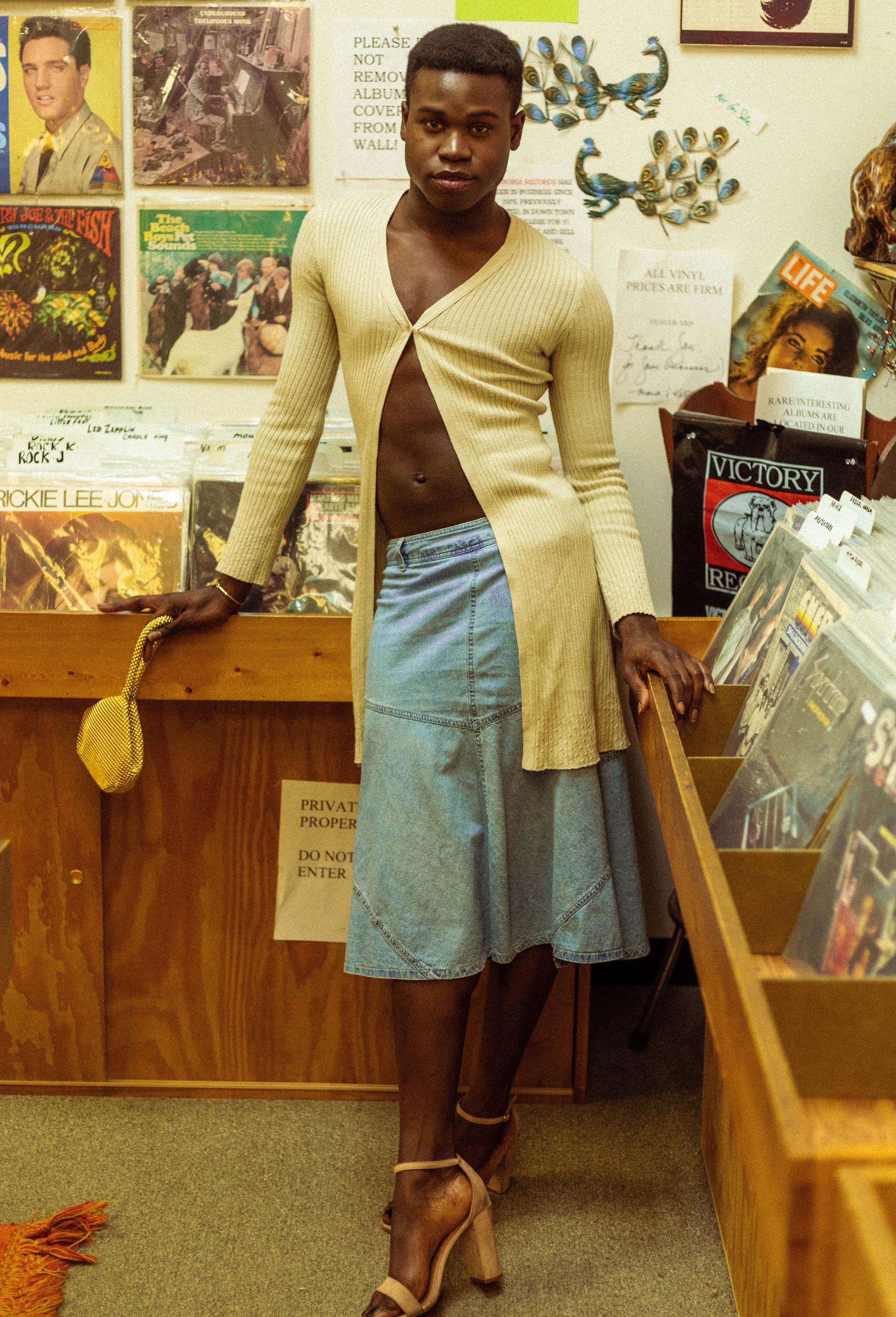
4 minute read
Breaking Gender Roles One Red Carpet at a Time
Photographed by: Becca Baker
BY STEVIE VESCIO-SANZ
Fashion is a prime tool for self-expression. Some might even argue that a person’s style is the first indicator we receive about who they are. However, for decades fashion has existed within the gender binary — men wear pants and ties, women wear skirts and frills. These expectations that are forced upon us beginning in infancy leave little room for self-exploration in the ways we adorn ourselves. Androgyny, by definition, breaks this binary. Defined by the Merriam-Webster Dictionary as “the quality or state of being neither specifically feminine or masculine,” bringing androgyny into the fashion world eliminates these gendered expectations and allows more room for individuality.
Gender expectations, however, extend far beyond fashion. In fact, gender roles are so ingrained into American culture that we have come to accept them as truths of life rather than largely imaginary differences. Mary Kruk, a Ph.D. candidate in psychology at Penn State, defines gender roles as the ways society expects men and women to behave — the rules people are expected to adhere to based on the bodies they inhabit.
“Women are expected to be nurturing, caring, docile, agreeable and emotional. Whereas men are expected to be strong, independent and not very emotional. Men are expected to — or allowed to — be very sexual, women are not. Women are supposed to be sexual with, say, one person, not with a lot of people, or else they risk being called sluts,” Kruk says. These roles that we expect men and women to fit into begin in childhood and have deeply-rooted consequences ranging from economic hardships for women to difficulties with communication between men and women in relationships. Perhaps most significantly, though, is the emotional toll that gender roles can take on people who don’t feel like they fit the role they were given. Whether this manifests in the inability to have a fully satisfying career or the inability to dress in a way that expresses your inner self, society’s expectations of men and women lead to significant stress for many people — even those who seem to fit the bill perfectly. Then why do we continue to rely on gender roles? Because, “that’s what we’re taught to do, that’s how we’re taught to behave and that’s what people applaud us for,” Kruk says. “If you get praise for acting one way, it’s really difficult to act in a way that might not get you praise.”
When it comes to fashion, breaking gender roles can be exhilarating, but also risky. While women have been allowed to wear more androgynous clothing for decades, men have not had the same privilege. Oftentimes, men who don’t present themselves as traditionally masculine in their dress face severe backlash from society in the forms of verbal and physical harassment. However, in recent years men — particularly men in Hollywood — have been given space in society to experiment with feminine clothing.
Androgynous fashion has always had its place in the entertainment world — whether that be Ziggy Stardust or “The Rocky Horror Picture Show” — but even these most famous examples were adored largely within subcultures rather than the mainstream. However, now more than ever, androgynous fashion has found a home with the most mainstream people imaginable: A-listers. Today, some of the most widely admired celebrities regularly break gender expectations in their fashion. From Timothée Chalamet to Zendaya, androgyny is everywhere.
Harry Styles — arguably the most widely adored celebrity at the moment — not only became the first man to appear solo on the cover of Vogue, but did it in a dress. He faced backlash, sure, but the backlash seemingly had no impact on his public image of heartthrob and sweetheart. In fact, Styles’ post One Direction brand seems to be built almost entirely around his androgynous presence — and he has received no shortage of praise for the barriers he is breaking.
Following the lead of A-listers, suddenly thousands upon thousands of men across the country are wearing nail polish and eyeliner, crop tops and florals. In part thanks to social media, now more than ever men are allowed to express identity outside of the traditional masculine ideal. Icons of androgynous fashion like Prince and David Bowie are no longer anomalies in the public eye. Today, celebrities can break the gender expectations of fashion without being a novelty, playing a role or making a statement — simply wanting to dress a certain way is justification enough.
The rise of androgyny has been a breakthrough in the fashion world, but does it signify more than that? Kruk worries that the role-breaking fashion we’re seeing today is simply a trend. “On the one hand, we seem to be more accepting of men painting fingernails and wearing more feminine clothing, but sometimes it feels like a fad, where we’re more accepting of heterosexual, cisgender men doing this,” she says. On the other hand — assuming that the rise of androgynous fashion is more than a trend — the growing acceptance of androgyny could reflect society’s gradual dismantling of traditional gender roles. Maybe, at some point in the future, there will be more women in leadership positions, men will be allowed to freely express emotion and androgynous fashion will be everywhere we turn.






